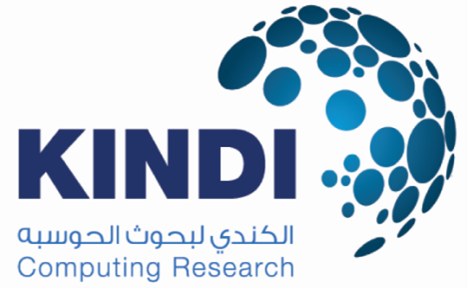Led By KINDI In Collaboration With KINDI
Led By KINDI
In Collaboration With KINDI
A Noninvasive Monitor to Predict Hypoglycemia in Diabetes Patients Using Artificial intelligence
The identification of hypoglycemia is critical to reduce the morbidity and mortality among patients with type 1 or type 2 diabetes, especially in patients treated with insulin. This research proposal investigates the utility of non-invasive physiological sensor technologies and machine learning techniques to predict the development of hypoglycemia. The prediction of a hypoglycemic event through non-invasive monitoring would have a major impact on the ability of the patient and healthcare provider to achieve optimal glycemic control without increasing the risk of hypoglycemia. A non-invasive wearable sensor that predicts the development of hypoglycemia may prevent the significant morbidity and mortality associated with severe hypoglycemia.

Loss Functions Evaluation for Corneal Nerve Segmentation.
Corneal confocal microscopy (CCM) has been advocated as a non-invasive technique for objective diagnosis of very early neuropathy in patients by scanning the corneal subbasal nerve plexus. The obtained images provide a range of research opportunities to be explored. Current research revolves around providing automated solutions for nerve segmentation in CCM images. A common problem in CCM nerve segmentation is that the total number of nerve pixels is much smaller than the total number of background pixels. Thus, accuracy is not a very suitable evaluation metric for this problem. At the same time, the loss function used in the deep learning network influences the performance of the network. It is an important constituent of a deep learning segmentation network. In this project, we address the problem of low sensitivity of nerves in automatic segmentation caused by imbalanced pixel distribution in the CCM images. We evaluate different loss functions for this problem.

Enhancing the Performance and Security of Anonymous Communication Networks.
Tor’s anonymity network is one of the most widely used anonymity networks online, it consists of thousands of routers run by volunteers. Tor preserves the anonymity of its users by relaying the traffic through a number of routers (called onion routers) forming a circuit. The current design of Tor’s transport layer suffers from a number of problems affecting the performance of the network. Several researches proposed changes in the transport design in order to eliminate the effect of these problems and improve the performance of Tor’s network. However, the performance of Tor’s network still limits the adoption of Tor by many users. In our research, we are proposing two main approaches to enhance the performance of Tor’s anonymity network. 1) We address the transport layer issues in Tor’s network by introducing QuicTor; with QUIC protocol replacing the TCP/TLS for the transport layer. 2) We also address the queue management issues at Tor’s application layer.
Early Detection of Fake News over Arabic Social Media
Fake news is everywhere nowadays. For a long time, such news propagated over newspapers and traditional mainstream media; however, the recent emergence and popularity of social media platforms (e.g., Twitter) made it very easy to spread a rumor in just a few hours or even seconds across continents. That usually happens even before the news is picked up by the mainstream media. The spread of wrong information arises to have a strong (negative) influence, not only on involved individuals, but also on large communities and even countries. In this project, we propose to design, implement, and deploy the first end-to-end system that monitors Arabic social media (in particular Twitter) to early-detect fake news, analyze its propagation, and provide supporting and/or refuting evidence that can be understood and verified by the end user.

Cybersecurity visualization
This project will develop and evaluate visualizations to coherently represent the rich semantics of the security policy domain in order to promote collaboration between managers and IT security specialists and to improve the deployment of digital security within organizations. Effective shared understanding by organization managers and IT security specialists is critical for the successful specification and implementation of digital security policies. When the collaboration is poor, ambiguities and misunderstandings may result in assigning less priority to security policies proposed by security experts of the organization. It may also unnecessarily hamper the smooth security implementation in the organization, and ultimately the organization is prone to cyber-attacks. This project explores the specific challenges faced in the collaboration between access control policy makers and implementers and the limitations that current tools have towards addressing these challenges. We argue that the challenges of collaboration between policy makers and implementers lead to a misunderstanding of security policy semantics. A key challenge is that policy makers and implementers have different languages for communications. The lack of a common language leads to a miscommunication between the two parties. Hence, the key aim of our work is to, ultimately, design a visualization tool that act as a common language for both policy makers and implementer.

Security in Systems of Social-Technical Systems
A Systems of Systems (SoS) is a system in which the elements are managerially and operationally independent systems, and which all together produce results that cannot be achieved by individual systems alone. In this context, we call "emerging behavior" a behavior obtained from the collaboration between the constituent systems. These types of (expected) behaviors are usually imagined by the SoS designer in response to a complex problem that constituent systems cannot handle alone. The diffusion of digital systems, whether in society at large or in microcosms such as businesses, means that humans can be considered as a constituent of a SoS. Indeed, by its direct interaction with the SoS, or through systems such as IoT for example, a person can be brought to interact with one or more SoS systems, affected by the same expected or not emergent behaviors. Such systems are called Systems of Social-Technical Systems (SoSTS). In this work, we propose to study the emerging behaviors from SoSTS in order to identify the potential security vulnerabilities that are related to systems, humans or the combination of both. Indeed, even if the constituent systems of a SoSTS are considered as safe individually, their collaboration in a SoSTS may reveal new security vulnerabilities that can be related to systems, humans or interactions.